Women Fashion Power – co-curated by fashion expert and commentator Colin McDowell and Donna Loveday, Head of Curatorial at the Design Museum – offers a look at how princesses, models, CEOs, Dames and designers have used fashion to define and enhance their position in the world. Address contributor Grace Wood visited the exhibition that recently opened at London’s Design Museum.
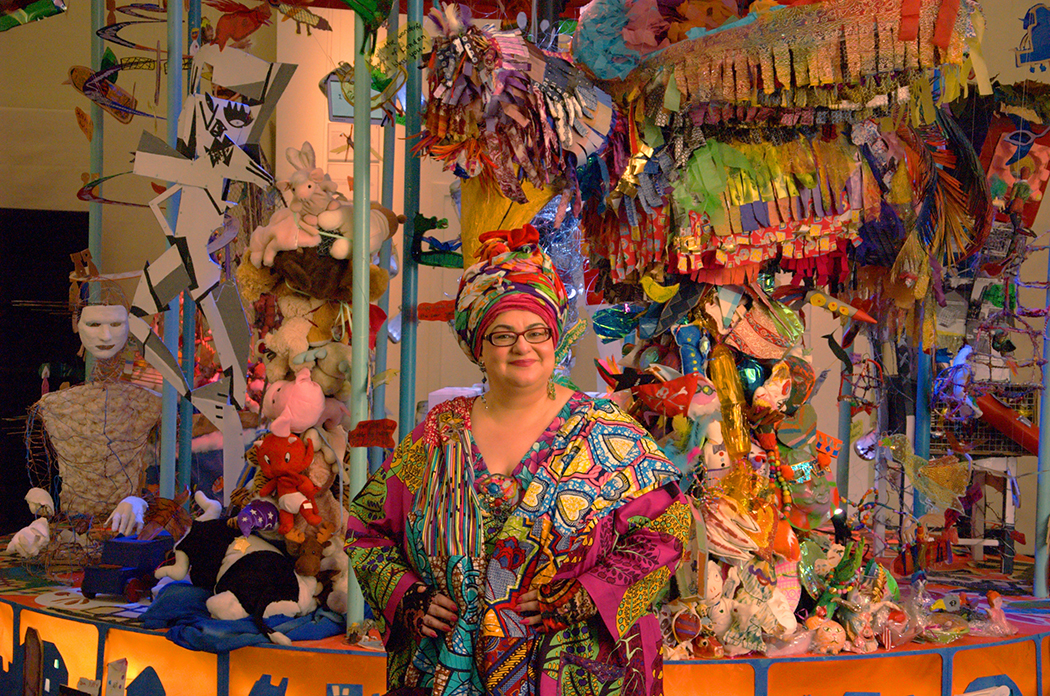
Camila Batmanghelidjh, Founder and Director of Kids Company
Opening with a historical timeline of powerful women, ranging from Eve, believed to be the first female to set foot on Earth, to the present Chancellor of Germany, Angela Merkel, the space leads onto two distinctive themes of exhibit. A visual timeline exploring the past one hundred and fifty years in women’s fashion is accompanied with an area dedicated to showcasing a spectacle of outfits, taken from contemporary, influential women’s wardrobes. Combined, the different perspectives of Women Fashion Power unite to pose the question, if fashion should be seen as a form of distraction for working women, or as an essential component to their success. “What we wanted to do was look at how fashion mirrors what is going on in society and how, as women’s role within society has changed over time, so has the clothing they wear” says Loveday.
Acting as a three-dimensional fashion encyclopedia, the timeline takes visitors through what Loveday calls ‘liberating moments’ in women’s fashion, which have gone on to shape the way women dress today. These include cultural movements such as the women’s suffrage which began in 1866, the invention of new fabrics including nylon in 1940 and lycra in 1959, new design silhouettes, for example the bikini in 1946 and the introduction of e-commerce and affordable luxury from the 1990’s onwards. The garments on display vary from the restricted and time consuming corsets of the late nineteenth, early twentieth century, to the accessibility of a polka dot cardigan from the 2008 collaboration between high street retailer H&M and coveted Japanese fashion house, Comme des Garcons. The aim of the timeline is to showcase how women have gone from being restricted by the garments they can wear, to having the freedom to choose.
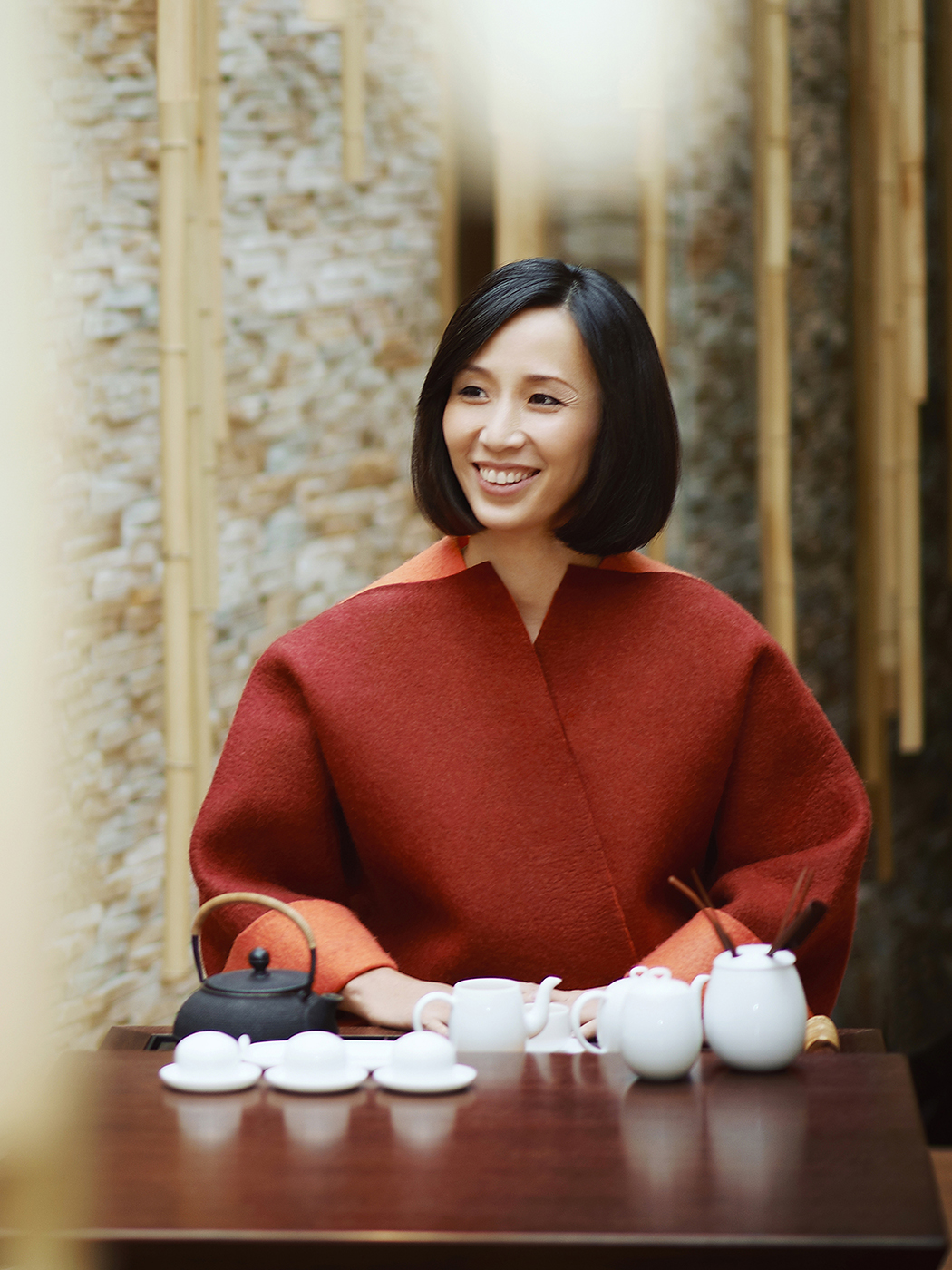
Qiong-er Jiang, Artistic Director of Shangxia, China
However ironically, perhaps going in full circle, the 1990 to present day section of the timeline features a series of Christian Louboutin heels. With their sky high design, many women would be restricted in how they could walk when wearing the shoes, referring back to the discomfort and physical damage which women opposed when wearing the corset. Yet, in the same way as the hourglass figure was seen as a fashionable ideal, it goes without question that a simple flash of that instantly recognisable red sole signifies status. Does this consequently mean empowerment?
Clothes are often seen as a powerful tool of self-expression: a visual language of communication. When selecting twenty-six ‘intelligent’ women, all leaders in their field, to showcase within the exhibition, McDowell and Loveday aimed to feature high profile women who understand that the clothes they wear, have a direct impact on the way they communicate and are viewed by the world. Each of the women were asked to contribute an outfit for display, whilst providing an explanation why the particular outfit had been chosen, detailing how they felt it expressed both a sense of style and an expression of empowerment.
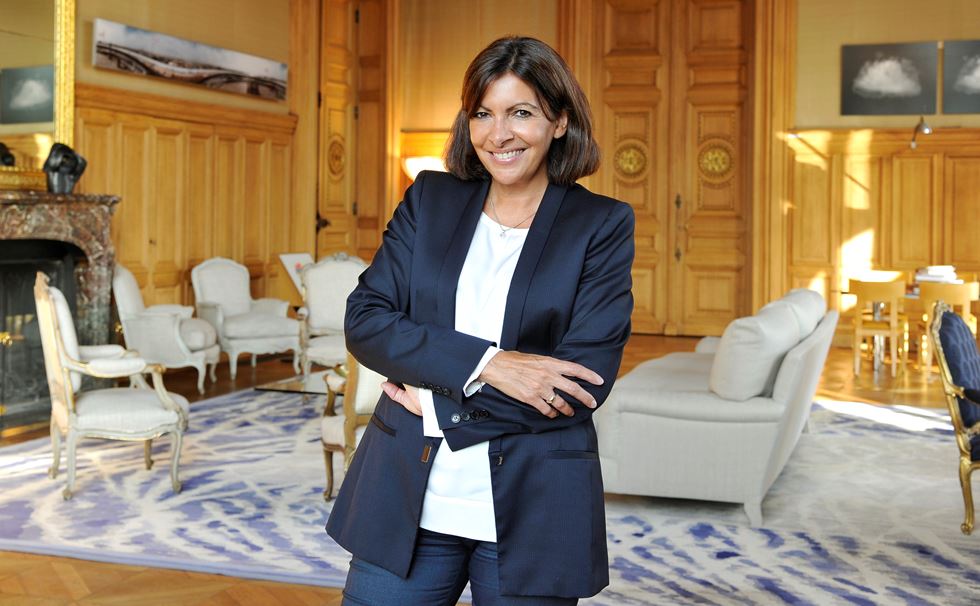
Anne Hidalgo, Mayor of Paris. Source: Dominique Maître/ Women’s Wear Daily
Ranging from fashion designers and journalists, to the Mayor of Paris and Princess of Monaco, the twenty six powerful women featured in the exhibition were chosen as a result of a complex process. “I think the selection of women featured in the exhibition was probably thirty percent emotional and seventy percent intellectual” claims McDowell. “There were certain women which we wanted to have, then there were certain women which we had to have”. Loveday went on to elaborate that in the initial stages of research, the pair began reviewing the many ‘Power Lists’ and ‘Best Dressed Lists’ seen in today’s magazines and broadsheets to help aid their selection, whilst explaining how they also chose to speak to as many women as possible, about who they considered to be a powerful woman and why. McDowell and Loveday were true to their word, with this exhibition acting as a celebration of extraordinary characters. Consequently, it is pleasing to discover that the co-curators had chosen LucienneRoberts+ to design the exhibitions graphics and Zaha Hadid to design the space.
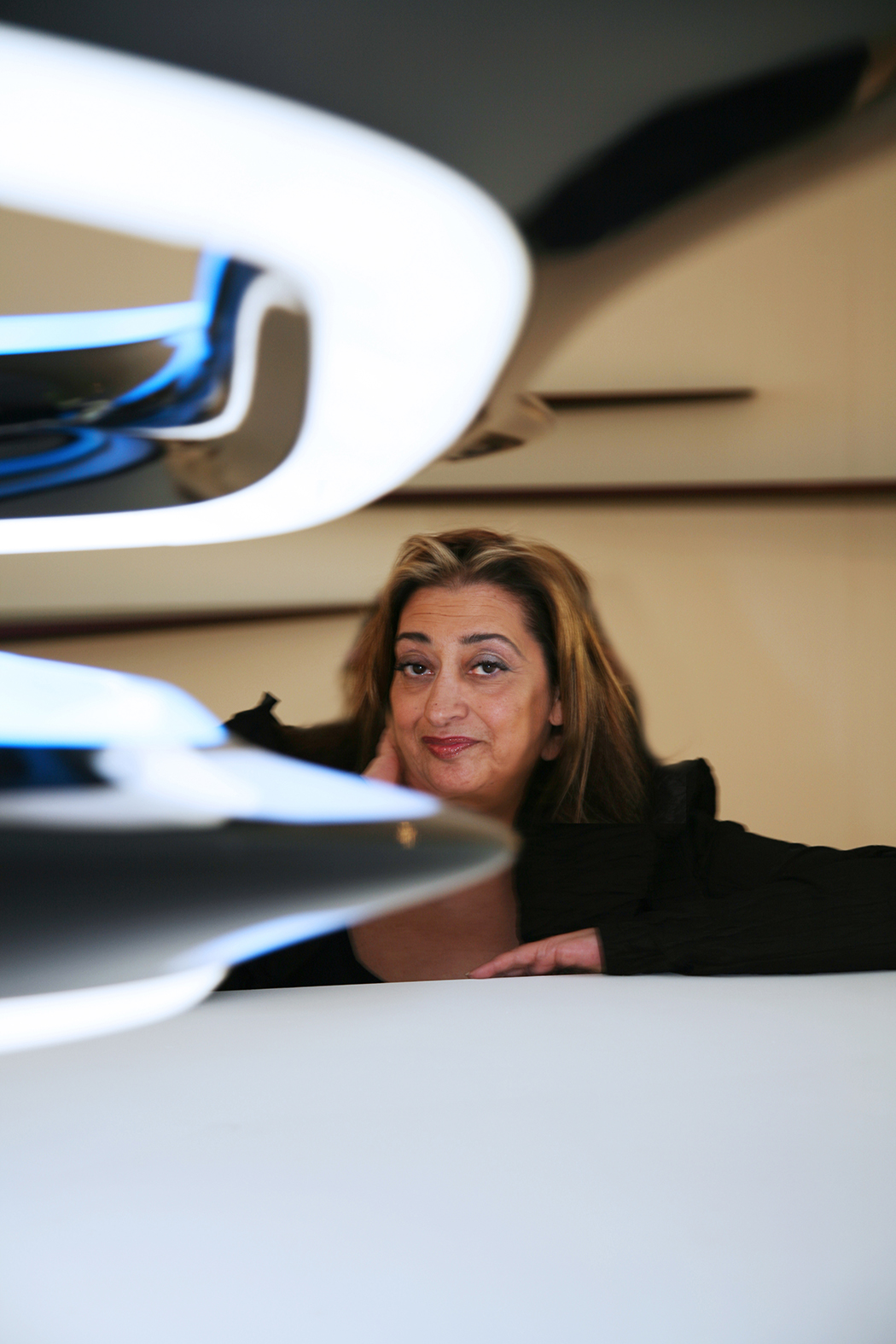
Dame Zaha Hadid, Founder and Director of Zaha Hadid Architects. Source: Luke Hayes
The outfits on show vary profoundly, demonstrating that every woman has a unique approach to the definition of empowerment and what it represents. When walking into the exhibition, one of the first written extracts visitors see is a piece entitled ‘Power and Fashion’ which details just some of the ways power has been expressed by influential women, over time through their clothing choices. Throughout the entire course of history, clothes have been used as signposts, signaling details of a person’s lifestyle, wealth, religious beliefs and indeed, gender.
Some of the women’s choices and interpretation of empowerment through clothing is reflective of fashion icons of the past, as mentioned in the written passage – the monochrome shirt and jacket combination chosen by Net-a-Porter’s Founder and Executive Chair, Natalie Massenet MBE is reflective of Joan of Arc’s adoption of a masculine silhouette whilst the pearl, grey chiffon Dolce & Gabbana dress, with crystal mesh embroidery selected by Alfiya Kuanysheva, Founder and Co-Chair of BATT Corporation could be reflective of how it is described Queen Elizabeth I used ‘opulent bejewelled dresses to project power’. Perhaps there is no greater expression of power than the outfits chosen by the likes of Dame Zandra Rhodes and Vivienne Westwood, who amongst others, chose to showcase garments from their own, successful collections.
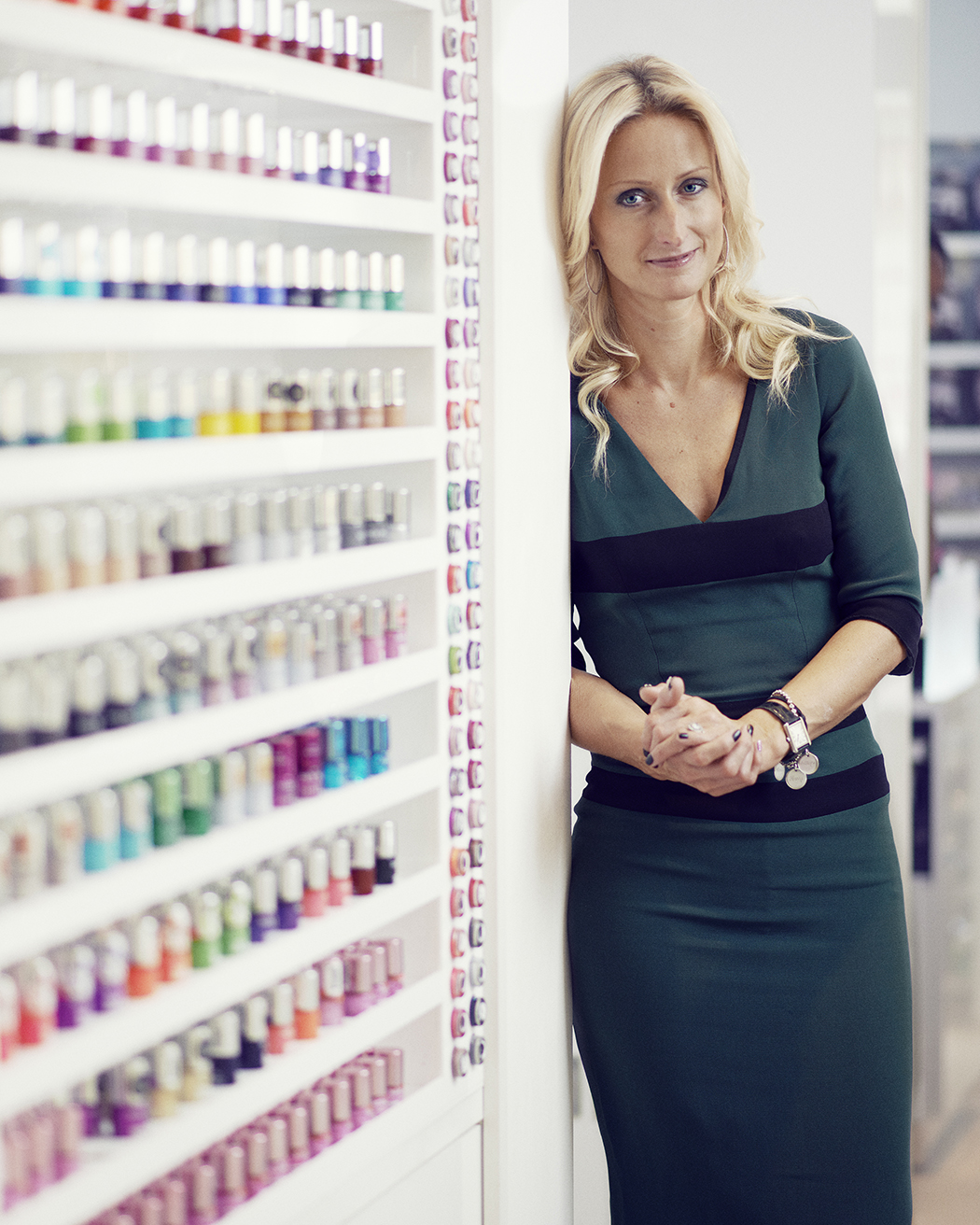
Thea Green MBE, Founder and Managing Director of Nails Inc. Source: Andy Lo Po
Women Fashion Power will be on display at London’s Design Museum until 26th April 2015.

